2021 Bauder Lecture Series
Unsettling Landscapes at Cranbrook: Histories of Indigenous Communities, the Japanese Experience, and Suburban Segregation
Sunday Afternoons
April 11, 18, and 25, 2021
3:00 to 4:30pm Eastern Daylight Savings Time
A Series of Three Live Virtual Lectures and Conversations
Presented by Cranbrook Center for Collections and Research
Guest Speakers (as pictured above, from left to right) include Gregory J. Fioritto, Eric Hemenway, John P. Bowes, Mika Kennedy, Thomas J. Sugrue, and Bonnie Clark.
Hosted and Moderated by Gregory Wittkopp, Director, Cranbrook Center for Collections and Research
Admission is Free and Open to the Public
Registration Required – Zoom Link is Password-Protected

Join Cranbrook Center for Collections and Research as we examine the histories of three of Cranbrook’s iconic cultural landscapes through the lens of racial and social justice. The 2021 installment of the annual Bauder Lecture Series, Unsettling Landscapes at Cranbrook, brings six historians and experts to the Center’s virtual auditorium where they will help us explore, expand, and enrich our understanding of the histories associated with Cranbrook’s original 1904 Booth Estate, the 1915 Japanese Garden, and the 1950 Frank Lloyd Wright-designed Smith House.
While admission to the Bauder Lecture Series is free, we kindly ask you to consider making a donation to support the work of Cranbrook Center for Collections and Research, including our commitment to diversity, equity, access, and inclusion (DEAI) initiatives. You do not need to register for each lecture separately; your registration will provide access and Zoom links to all three virtual lectures.
LECTURE ONE: THE CRANBROOK ESTATE AND THE HISTORY OF THE REGION’S INDIGENOUS COMMUNITIES
Sunday, April 11, 2021, 3:00 – 4:30pm ET
In the traditional history of Cranbrook, the community begins when our founders, newspaper publishers George Gough Booth and Ellen Scripps Booth, bought a “run-down farm” in 1904. By the late 1920s, the Booths had not only transformed this farm into an incomparable country estate—with a manor home designed by Albert Kahn surrounded by forty acres of terraces and gardens—but also conceived a series of six educational and cultural institutions, the basis of today’s Cranbrook Educational Community.
That farm, however, was on land that less than a century earlier had been ceded by the Odawa (Ottawa), Ojibwe (Chippewa), Wendat (Wyandot), and Potawatomi Nations in the 1807 Treaty of Detroit. With a focus on reclaiming lost, forgotten, and stolen stories, this lecture explores the history of the Indigenous communities around the Great Lakes and in Oakland County and examines how the Cranbrook property and surrounding region were used prior to the arrival of white traders and settlers from Europe.
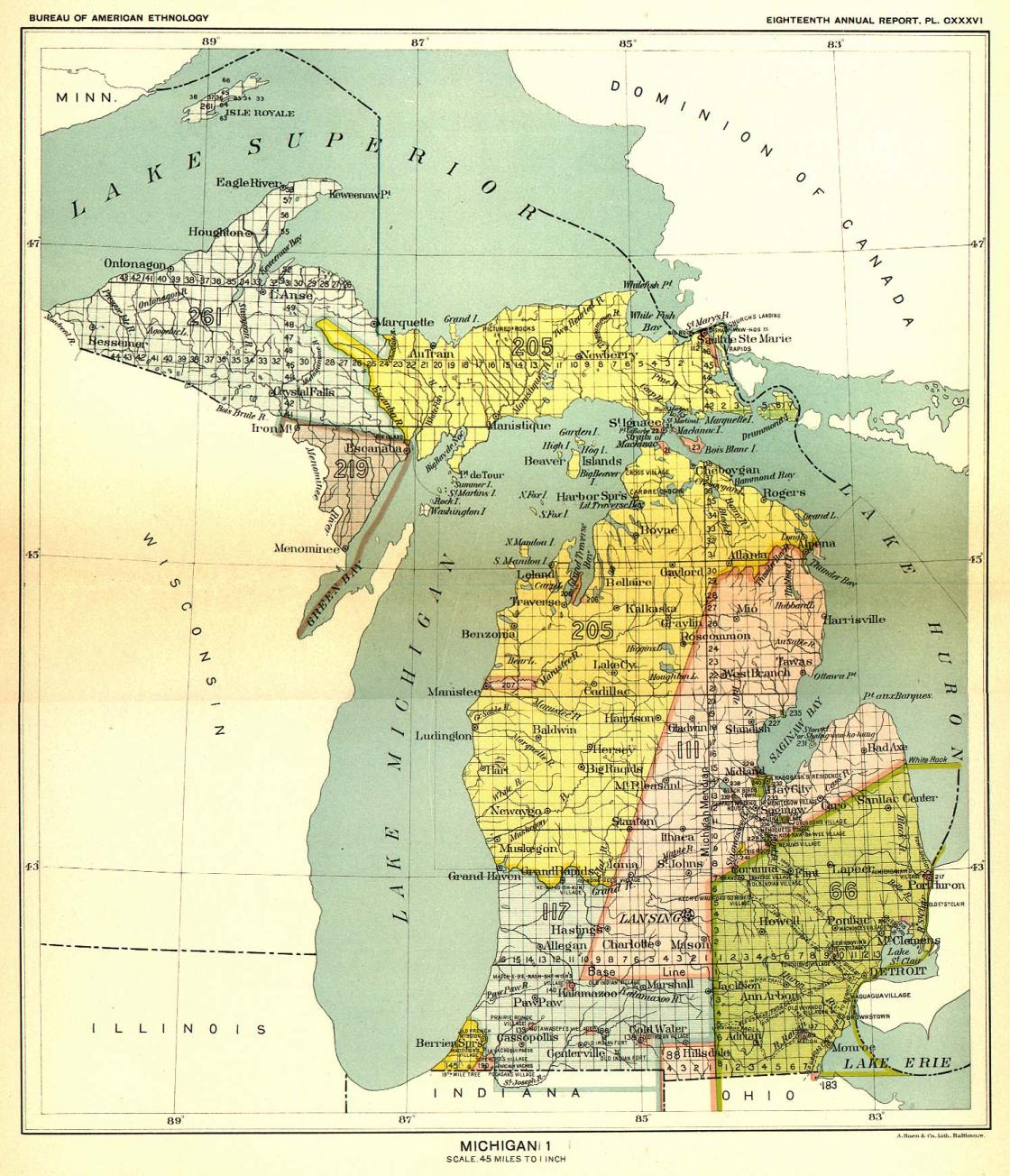
John Bowes will present the history of Federal “Indian removal” policies from the first half of the nineteenth century, which allowed the United States to claim and define the land that become Michigan—first as part of the Northwest Territory (1787), then as Michigan Territory (1805), and finally as the State of Michigan (1837). While the narrative arc of Indian removal—more accurately described as forced relocations—often begins with President Andrew Jackson’s Indian Removal Act of 1830 and follows the Cherokee “Trail of Tears” from the South to lands west of the Mississippi River, Bowes will confront the more complicated history of northern Indian removal. With a focus on the experiences of the Odawa and Ojibwe in Michigan Territory, he will analyze the historical context and choices that enabled some Indian communities to avoid relocation further west.
Eric Hemenway will delve into the two-thousand-year history of the Indigenous peoples in the region we now describe as Southeastern Michigan. From the perspectives of the Anishinaabek—including the Ojibwe, Odawa, and Potawatomi, all of whom share a common language group—he will discuss their way of life before the creation of the United States and the indelible societal changes brought about by Federal and State treaties and policies in the 1800s. As a vivid example of the pre-contact presence of Indigenous people in Michigan, he will describe his work with Cranbrook Institute of Science to repatriate the remains of sixty Indigenous people—likely the population of an entire village, unburied in the 1890s during a road construction project in Oakland County.
Guest Speakers:
- Dr. John P. Bowes is Professor of History at Eastern Kentucky University and Chair of the Department of History, Philosophy, and Religious Studies. He is the author of five books including Exiles and Pioneers: Eastern Indians in the Trans-Mississippi West and, most recently, Land Too Good for Indians: Northern Indian Removal. As a consultant, Bowes has advised the National Museum of the American Indian; as an expert witness, he has worked on behalf of the Saginaw Chippewa Tribe of Michigan and the Little Traverse Bands of Odawa Indians. For more information, please visit Bowes’s EKU website.

- Eric Hemenway is the Director of Archives/Records for the Little Traverse Bay Bands of Odawa Indians, Harbor Springs, Michigan, where he collects and curates historical materials pertaining to LTBB Odawa. His experience includes working under the Native American Graves Protection and Repatriation Act (NAGPRA). Hemenway, who identifies as Anishnaabe, is a past board member for the Michigan Historical Society, Michigan Humanities Council, National NAGPRA Review Committee, and Emmet County Historical Commission. He currently sits on the Michigan Historical Commission. For more information on the LTBB Odawa, visit their website.
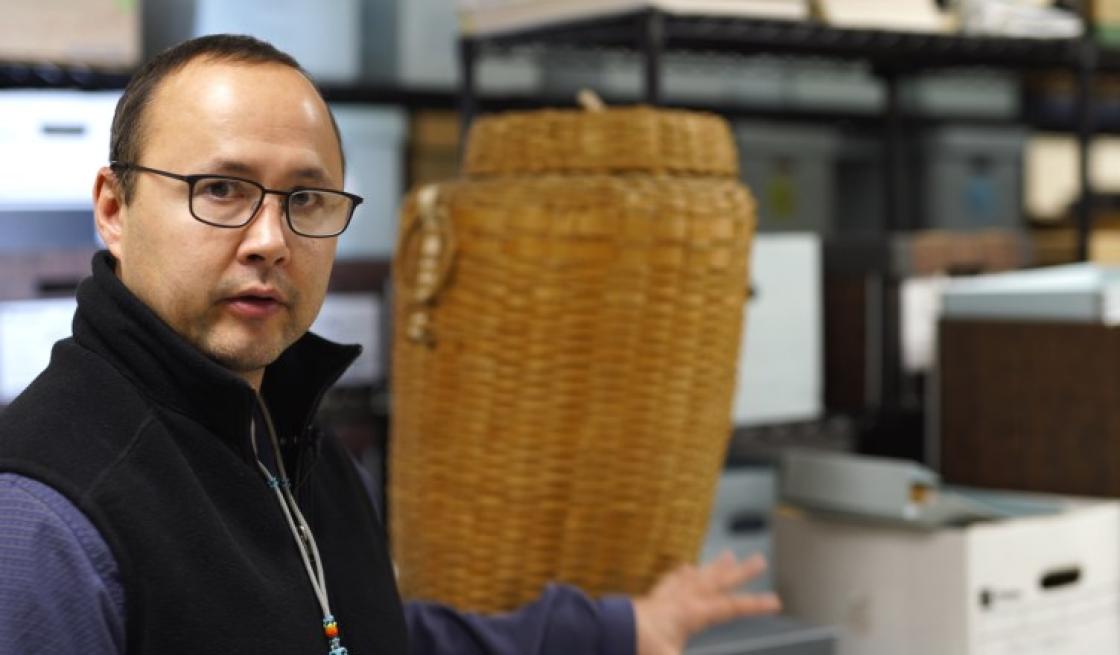
Lecture Two: The Cranbrook Japanese Garden and the Japanese Experience in World War II and its Aftermath
Sunday, April 18, 2021, 3:00 – 4:30pm ET
The 1915 Japanese Garden on the original Booth Estate—one of Cranbrook’s oldest cultural landscapes—will serve as the point of departure for the story of Japanese Americans during and after World War II, both nationally and in Metropolitan Detroit.
Bonnie Clark will tell the largely unknown story of the Japanese gardens of Amache, the U.S. government’s War Relocation Authority incarceration camp in Colorado where Japanese Americans were confined. Combining physical evidence with oral histories and archival data—enriched by the personal photographs and memories of Amache’s former Japanese American incarcerees—the archaeologist who literally uncovered the story will describe how gardeners cultivated community in confinement. Her presentation will include the story of Kaneji Domoto, one of Frank Lloyd Wright’s apprentices at Taliesin before the war.
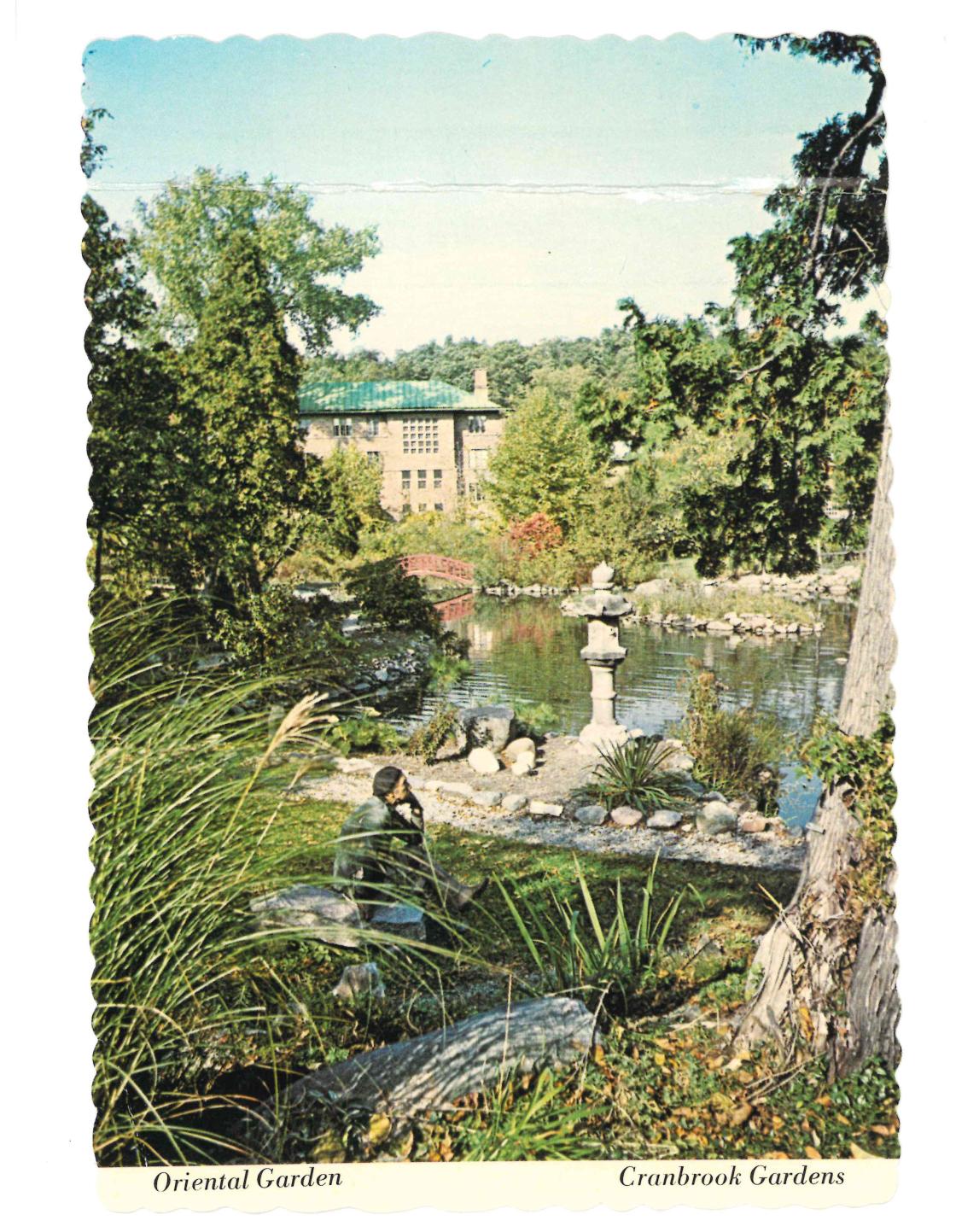
Mika Kennedy will move the conversation back to Michigan. Like many Americans nationwide, Cranbrook’s leaders distanced themselves from Japan during World War II, renaming the Japanese Garden the “Oriental Garden.” Yet they also re-embraced the Japanese community in the decades immediately after the war. The 1970s witnessed the initial rejuvenation of the Japanese Garden, and Cranbrook opened its campus to the Japanese community, offering Brookside School (the campus’s elementary school) as the site for the first Japanese School of Detroit and their Saturday morning math and Japanese language classes. In focusing on the development of Metropolitan Detroit’s Japanese community during the aftermath of the war and into the 1960s, 1970s, and 1980s, Kennedy’s presentation will provide a regional cultural context for Cranbrook’s Japanese Garden and the development of the Japanese School on its campus.
Guest Speakers:
- Dr. Bonnie J. Clark is Professor and Curator for Archaeology in the University of Denver’s Anthropology Department. She is the author of the 2020 book Finding Solace in the Soil: An Archaeology of Gardens and Gardeners at Amache (University Press of Colorado), co-editor of Archaeological Landscapes on the High Plains, co-author of Denver: An Archaeological History, and a member of the North American Japanese Gardens Association Board of Directors. For more information, please visit Clark’s website.
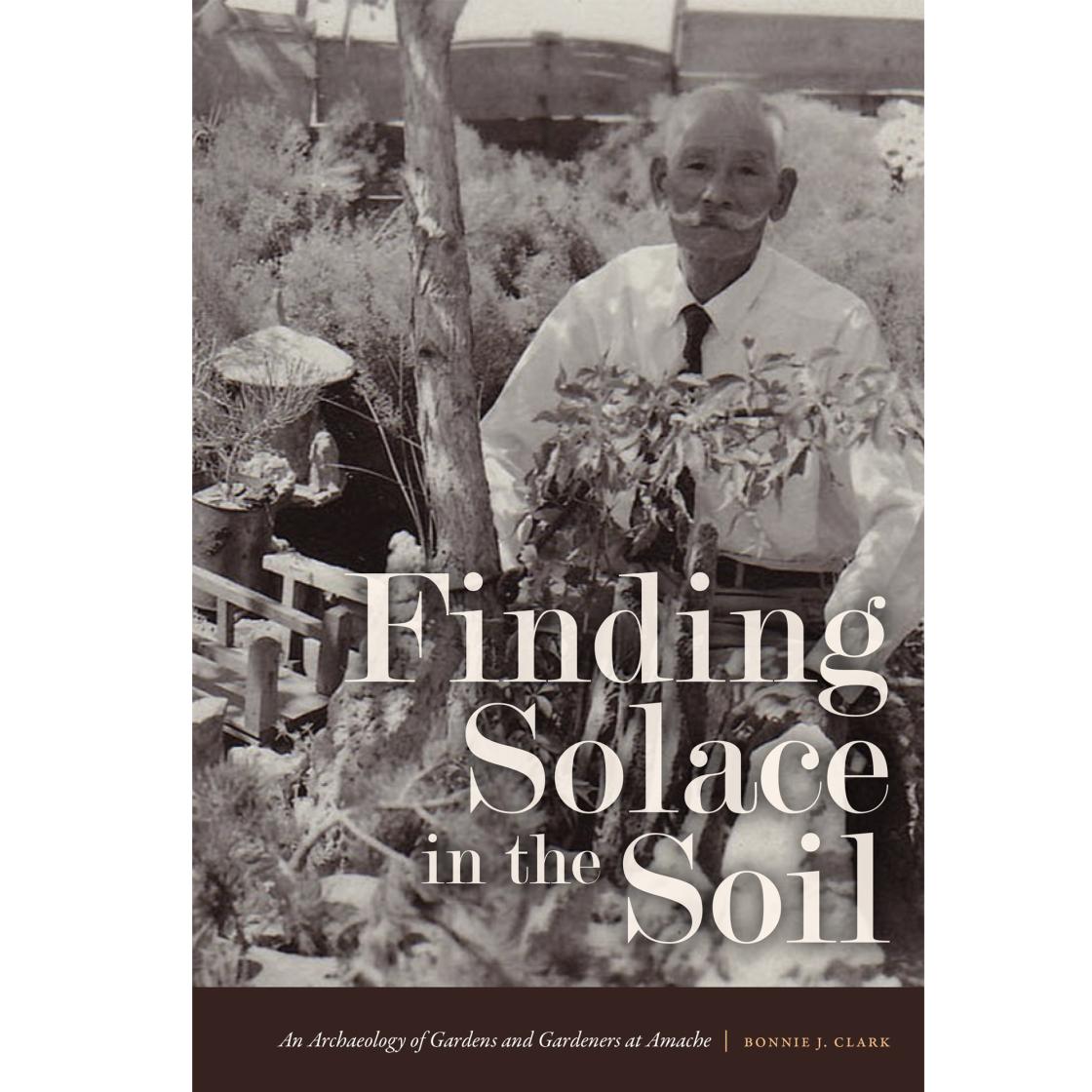
- Dr. Mika Kennedy is a Visiting Assistant Professor of English at Kalamazoo College and a co-curator of Exiled to Motown, the JACL (Japanese American Citizens League) Detroit Chapter’s exhibit of Japanese American community in Detroit. Her current book project examines narratives of Japanese American incarceration and their dialogue with questions about the environment, the “frontier,” and Native sovereignty. She is gosei, or fifth-generation Japanese American. For more information, please visit Kennedy’s website.

Lecture Three: The Frank Lloyd Wright Smith House and Segregation in Metropolitan Detroit
Sunday, April 25, 2021, 3:00 – 4:30pm ET
When Cranbrook took ownership of the nearby Frank Lloyd Wright-designed Smith House in 2017, it acquired more than a completely intact 1950 Usonian house and its surrounding landscape—Cranbrook became signatory to a problematic deed.

At the very top of the Lone Pine Road Estates 1931 restrictive covenants (restrictions noted in the Warranty Deeds), there is a note that the property in this subdivision may not be owned or rented by anyone that is not of the “pure, unmixed white, Caucasian, Gentile race.” The irony is that the Smiths themselves were born into Orthodox Jewish families in Detroit and were only able to purchase the land in the 1940s because of their non-Jewish-sounding surname. While illegal and unenforceable—and disavowed by the subdivision’s current homeowners—the Smith House deed stands as a reminder of the enduring legacy of racism and housing segregation in America.
Thomas Sugrue will examine how federal, state, and local governments systematically imposed residential segregation in Detroit—and across the nation. As part of this presentation, he will assess the role that home and property owners’ associations played in enforcing restrictive covenants and promoting segregation throughout Detroit and its suburbs.
Gregory Fioritto will answer the question: What can the members and boards of homeowners’ associations do to change existing deeds—including that of the Smith House—to ensure they are never again used as tools to promote exclusionary practices? He will provide an overview of both the current Michigan laws governing community associations as well as a bill introduced in the Michigan House of Representatives—the Prohibited Restrictive Covenant Act—that addresses racist restrictions and offers permanent solutions.
Guest Speakers:
- Dr. Thomas J. Sugrue is Professor of Social and Cultural Analysis and History and Director of the Cities Collaborative at New York University. A native of Detroit, he is the author of four books, editor of four others, and a frequent expert witness for cases involving voting rights and housing discrimination. His award-winning book, The Origins of the Urban Crisis: Race and Inequality in Postwar Detroit, remains the definitive portrait of postwar Detroit. For more information, please visit Sugrue’s website.
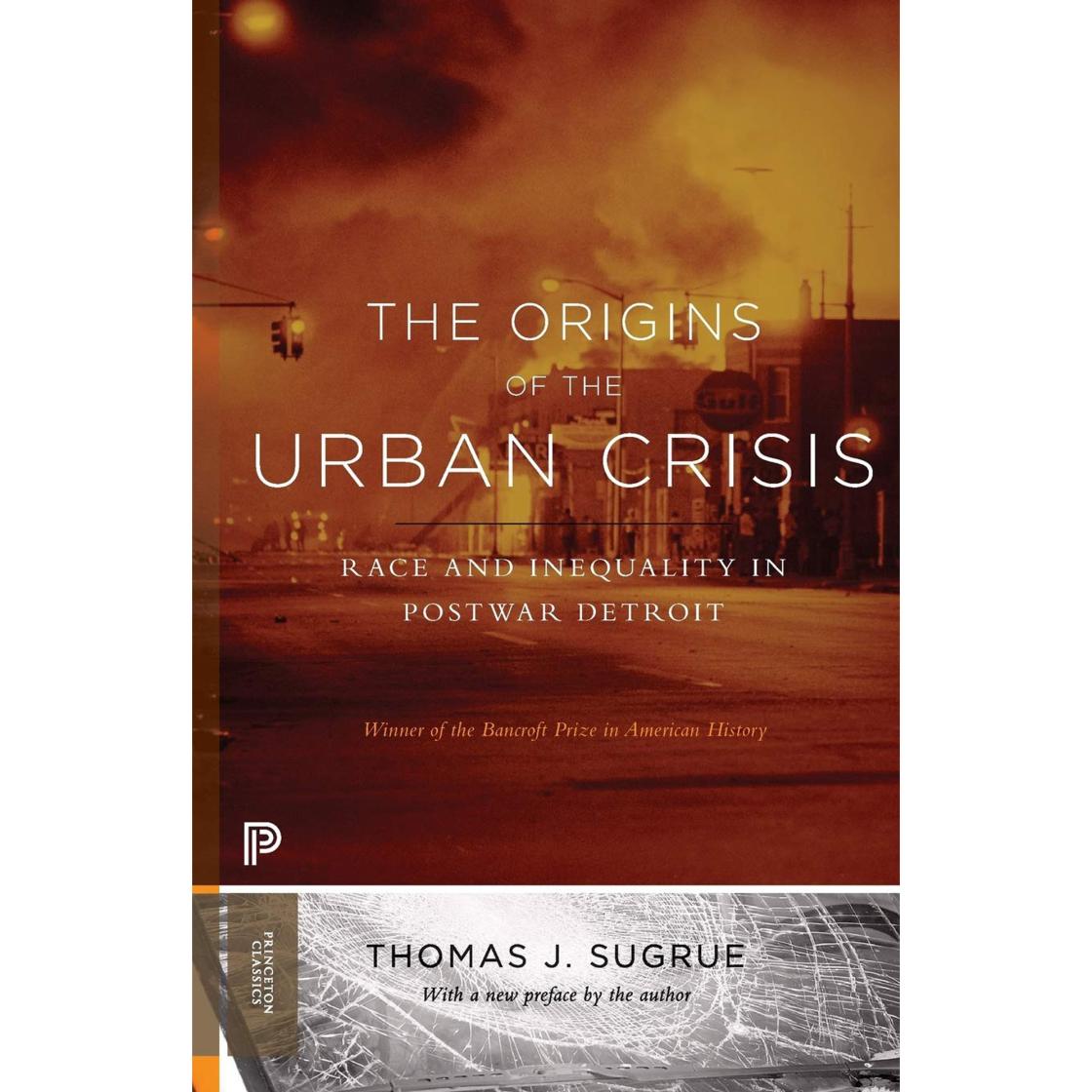
- Gregory J. Fioritto is a partner with the law firm of Zelmanski, Danner & Fioritto, PLLC. A 2000 graduate of the University of Michigan Law School, he has spent nearly his entire legal career practicing in the field of community association law. He has lectured on the subject for various organizations, including the Community Associations Institute (CAI) and the United Condominium Owners of Michigan (UCOM), and is a Co-Chairperson of CAI’s Legislative Action Committee for Michigan. He also serves as President of his own condominium association’s Board of Directors in Canton, Michigan. For more information on Fioritto, please visit ZDF’s website.

About the Bauder Lecture Series
Unsettling Landscapes at Cranbrook represents the fifth installment of the Center’s annual Lillian and Donald Bauder Lecture Series. Established in 2016 through a generous gift from Cranbrook President Emeritus Dr. Lillian Bauder and her late husband Donald Bauder, this endowed lecture series allows the Center to bring to campus speakers of national significance whose work intersects with the history of Cranbrook and its legacy.
The inaugural Bauder Lecture in 2017 brought to Cranbrook author David Sax for a conversation about his book The Revenge of Analog: Real Things and Why They Matter (2016). The second lecture in 2018 featured Columbia University professor of art history and MoMA curator Barry Bergdoll, who told the story of Frank Lloyd Wright’s career and the successful transfer of Wright’s archive from Taliesin to New York. During the third lecture in 2019, Tim Whalen, the John E. and Louise Bryson Director of the Getty Conservation Institute in Los Angeles, presented five of the Institute’s multidisciplinary projects and their ongoing role in the conservation of the world’s cultural heritage. Most recently during the fourth lecture in 2020—the Center’s first virtual lecture after the onset of the global Covid-19 pandemic—Brendan Cormier, a Senior Curator at the Victoria and Albert Museum in London, discussed his groundbreaking exhibition, Cars: Accelerating the Modern World.
A visionary leader, Dr. Bauder served as Cranbrook’s President and Chief Executive Officer from 1983 to 1996, a period during which she not only developed Cranbrook’s first community-wide strategic plans but also created a master plan that ultimately led to the building of the Vlasic Early Childhood Center, the Williams Natatorium, the Academy of Art’s New Studios Building, and the expansion of the Institute of Science. In 1996, Dr. Bauder became Vice President of Masco Corporation, a position she held until she retired in 2007. A 2014 recipient of Cranbrook’s prestigious Founders Award, Dr. Bauder now resides in Columbia, Maryland.
Additional Information
On the Friday prior to each of the lecture dates, registered participants will receive an email with instructions on how to join these virtual experiences; a reminder will be sent one hour prior to the start of the lectures. Each link is unique, and advance registration is required for all participants. The lectures will begin promptly at their scheduled times and will be followed by a ten-minute Q&A session. The Center’s virtual auditorium will open fifteen minutes before the lectures begin for informal conversation and to permit participants time to test their Zoom connection.
For additional information, please send an email to center@cranbrook.edu or leave a voice message at 248.645.3307. The Center’s regular virtual office hours are Tuesday through Friday, 10am to 5pm.
Banner Image (from left to right): Gregory J. Fioritto, Eric Hemenway, John P. Bowes, Mika Kennedy, Thomas J. Sugrue, and Bonnie Clark. Photographs courtesy of the speakers.
Images at Left (from top to bottom):
Map of “Indian Land Cessions” from the Eighteenth Annual Report of the Bureau of American Ethnology to the Secretary of the Smithsonian Institution, Part 2, 1896-1897, United States Government Printing Office. Collection of Smithsonian Libraries. The 1807 Treaty of Detroit ceded the green-colored portion of this map, including what is now Detroit and Southeast Michigan.
Postcard of the “Oriental Garden” at Cranbrook with Rudy Fedus seated near the Japanese Kasuga Lantern, circa 1976. Published by Cranbrook Gardens Auxiliary. Collection of Cranbrook Center for Collections and Research, Gift of Katie McCreighton Young, 2019.
Melvyn Maxwell and Sara Stein Smith at their Frank Lloyd Wright-designed Usonian House in Bloomfield Township, Michigan, circa 1970. Photograph from the Collection of Cranbrook Archives, Cranbrook Center for Collections and Research, Gift of Anne Smith Towbes.
Images at Right:
Mountain Lantern created by Hiromu Terashita during the 2018 rehabilitation of the Lily Pond Cascade in the Cranbrook Japanese Garden, October 9, 2018. Photography by Gregory Wittkopp.
Additional Images and photographs, except Eric Hemenway, courtesy of the speakers; Hemenway photograph published online on Nature Change, January 4, 2019, with a YouTube video featuring Eric Hemenway.
